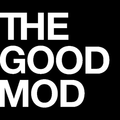Mario Botta
Born in Mendrisio, Switzerland in 1943, Botta trained as a technical draftsman before attending art school in Milan. From 1965 to 1969 he studied under Carlo Scarpa at the Institute University of Architecture in Venice. In this same period he was also an assistant to Louis I. Kahn and LeCorbusier. Botta then proceeded to open his own practice in Lugano, Switzerland (1970). Botta built exclusively in Switzerland during his early career, gaining international acclaim for such buildings as; the Capuchin convent in Lugano, the Craft Centre in Balerna, and the Administration Building for the Staatsbank in Fribourg.
Many of Botta's projects have been single-family houses. For him, the single-family house includes the problems and the objectives of the entire discipline of architecture. Carrying on the ideas of Kahn, Mario Botta believes in the organization of the relationship between man and nature and the distinctive characterization of man in relationship to his own environment. Botta is keenly interested in history and in the study of man's habitat through time. Because the home has been the one constant through the evolution of history, he feels this architectural type deserves both study and elaboration. It is not only individual needs, but also the collective requirements of societies that fascinate him. Another theme pervading his single-family houses is the search for the roots of a design and man's identity in a particular place. Cultural traditions are important throughout his projects, and his forms are derived from - but not copied from - "the environment as a testimony of history and memory". Because of this Botta is often identified with the Italian neo-rationalist group, Tendenza. The houses he designed during the early 1970s established the Ticino school and changed Swiss architecture dramatically. In the 1980's he secured international commissions such as the Museum of Modern Art in San Francisco, California. During this time (1980s) he designed for Alias. Botta’s innovative work has inspired and promoted a generation of Swiss architects who are internationally acclaimed.
Sources: architect.architecture.sk http://www.bookrags.com/tandf/botta-mario-1943-tf/ http://www.botta.ch/Page/Recenti_en.php

